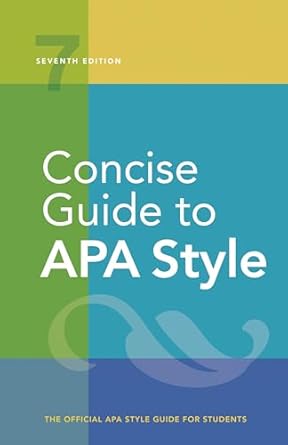[toc]
intext citations mastering author inclusion
Concise Guide to APA Style: 7th Edition (OFFICIAL)
Page 211 Review
In-Text Citations: A Deep Dive
Understanding in-text citations is crucial for academic integrity and giving credit where it’s due.
This section explores various aspects of in-text citations, focusing on author inclusion and handling repeated citations.
Repeated Narrative Citations
Figure 8.3 provides an example of repeated narrative citations with the year omitted.
This is a common practice to avoid redundancy when referring to the same study multiple times within a short span.
“Koehler (2016) experimentally examined how journalistic coverage influences public perception of the level of agreement among experts.
Koehler provided participants with quotations from real reviews for movies that critics either loved or loathed.
He found that participants better appreciated the level of expert consensus for highly rated movies when only positive reviews were provided rather than when both positive and negative reviews were provided, even when the proportion of positive to negative reviews was indicated.”
The study by Koehler (2016) highlights the impact of media presentation on public perception.
Presenting only positive reviews for highly-rated movies enhances the perceived expert consensus, while mixing positive and negative reviews can dilute this perception.
“These findings, in combination with similar research, demonstrate that providing evidence for both sides when most experts agree may lead to a false sense of balance (Koehler, 2016; Reginald, 2015).”
This observation raises concerns about the potential for creating a ‘false sense of balance’ when presenting opposing viewpoints, especially when a clear expert consensus exists.
Citing both Koehler (2016) and Reginald (2015) suggests a broader body of research supporting this idea.
Number of Authors in In-Text Citations
The number of authors included in an in-text citation varies depending on the total number of authors.
The goal is to provide sufficient information without making the citation overly cumbersome.
“For a work with one or two authors, include the author name(s) in every citation.”
When a source has only one or two authors, both names are always included in every citation, ensuring clear attribution.
“For a work with three or more authors, include the name of only the first author plus “et al.” in every citation, including the first citation, unless doing so would create ambiguity (see Section 8.18).”
For sources with three or more authors, the abbreviation ‘et al.’ (meaning ‘and others’) is used after the first author’s name.
This simplifies the citation while still acknowledging the collective authorship.
However, the section also warns to avoid ambiguity, which will be addressed later.
“In parenthetical citations, use an ampersand (&) between names for a work with two authors or before the last author when all names must be included to avoid ambiguity (see Section 8.18).
In narrative citations, spell out the word “and.””
The use of ‘&’ in parenthetical citations and ‘and’ in narrative citations is a stylistic convention.
Examples are provided for clarification:
(Joreskog & Sörbom, 2007)
Eifert and Yildiz (2018)
“In tables and figures, use an ampersand between names in both parenthetical and narrative citations.”
A minor but important rule: In tables and figures, ampersands are used exclusively.
“The same guidelines apply when any of the authors are groups.
For example, if a work is authored by three groups, the in-text citation would include the name of the first group plus “et al.””
(American Educational Research Association et al., 2014)
The guidelines extend to cases where groups are authors.
The first group’s name is followed by “et al.”, similar to individual authors.
Buy full ebook for only $18: https://www.lulu.com/shop/american-psychological-association/concise-guide-to-apa-style-7th-edition-official/ebook/product-rmzpq54.html?page=1&pageSize=4
Intext Citations Mastering Author Inclusion
Read more: Personality Functioning: Scales & Statistics Analysis</
Read more: Citing Visuals: APA Style Guide & Examples</


Leave a Reply